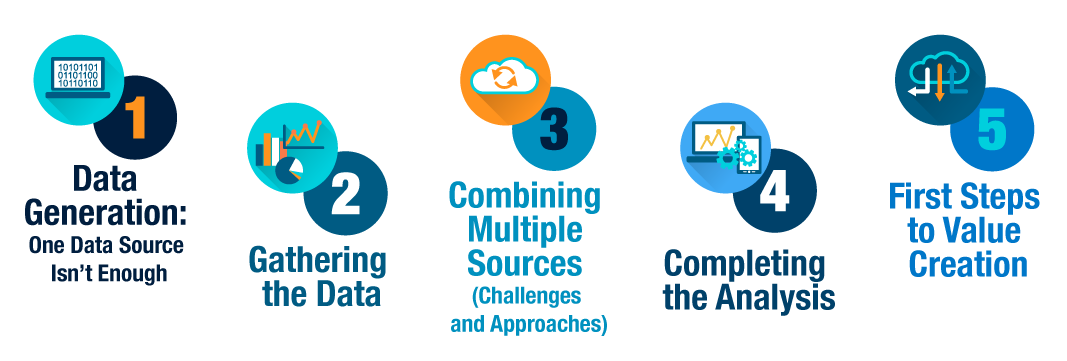Share

The first step in understanding the competitive position for multilocation businesses is getting reliable data on the firm's competitors. However, competitor data is not often available from a single source— some PE funds gather data by focusing on a few key competitor websites. Other times they estimate the number of locations per competitor from an aggregated list like Dun and Bradstreet or ZoomInfo.
While this can be a good start, these approaches have gaps: They can be incomplete (focusing on only some competitor websites), out of date, irrelevant (too broad for the niche industry being targeted), or unavailable at a granular level (and only aggregated by state or metropolitan statistical area). In an ideal world, PE firms would have a full list of relevant competitors with their specific locations.
Multiple sources are required as well, and these sources require extraction, consolidation, and validation. Data is even more difficult to collect when additional information about each location is needed, such as size, capacity, availability of specific products and services, etc. For example, in one of Stax’s engagements involving the acquisition of a dental chain, the client needed to measure capacity across specific specialties and hygienists. This is traditionally not available off-the-shelf.
To accurately estimate the local competitive supply, again, multiple sources are required. There are six common types of databases that are compiled into a final list of competitors:
- Search engines such as Google or Yelp, which contain location data and tags about those locations
- Industry-led websites that list providers of a service (for example, Zocdoc gives lists of doctors)
- Third-party websites that list providers of a service (e.g., lists of wineries for wine enthusiasts, or lists of Indian grocery stores from an Indian immigration website)
- Websites with licensing, often differing by state
- Professional associations
- Pre-assembled lists available for purchase by third parties.
2. Gathering the Data
After identifying the sources, the data needs to be gathered from their source(s). In the best cases, this can be done easily through an API provided by the owners of the data. For others, the data can be “scraped” through analytical tools (e.g., Python packages). In cases where the data is available, a data analytics team can build a tool to collect this information. This technique is often used to help categorize competitors based on what they do.
For example, with a list of competitor websites, a data scientist can build a tool to check each website for the presence of specific keywords that can identify specific services (e.g., “HVAC repair” or “HVAC maintenance”). This approach helps fill in gaps that are often unavailable from the broader sources.
3. Combining Multiple Sources (Challenges and Approaches)
After gathering the data, it needs to be combined into a single usable dataset, which is the most time-consuming process for the data analytics team. Some common challenges are:
- Matching (e.g., names and addresses of competitors are listed differently in different datasets, requiring some kind of logic to determine if two locations from different datasets are the same location)
- Inconsistent availability of information for matching (e.g., one source may list a business and its address, the other may list a business and its website)
- Different ways of defining a “unit” of competition (e.g., for doctor’s offices, some sources are lists of doctors, other sources are lists of doctor’s offices)
- Lack of key data required for later data analysis (e.g., three of four sources may contain data on the revenue associated with each location, and an assumption is needed to interpolate revenue for locations exclusive to the fourth source).
Data analytics teams have tools for this kind of cleanup. Referred to as “soft matching” techniques, these are a common example of predictive models that measure the likelihood that two locations are the same location (based on what is known about each of them).
Utilizing these tools requires some experience and judgment. In some circumstances, a 90% likely match is acceptable—in others, the accuracy may differ based on “false positive” matches vs. “false negative” matches. In the worst-case scenario, if accuracy is needed for every location, the uncertain matches can be checked manually.
4. Completing the analysis
Once the data is prepared, the analysis is often straightforward. To identify growth opportunities, Stax, as an example, uses standard analytical methods to identify mismatches between local supply and local demand. The key inputs for those analyses are the lists of current companies providing the service (the supply) and the total demand (usually equivalent to the total addressable market calculated in most CDD engagements we do). Once we understand who the market participants are, distributing this demand across the country is usually trivial with geospatial tools (e.g., Alteryx).
5. First steps to value creation
Customized lists of competitors are useful beyond the period of commercial due diligence. They are often the first step in a value creation engagement, since they help identify markets that the firm should enter organically; otherwise, they show opportunities for inorganic growth (acquisitions of competitors located in favorable or complementary geographies).
We’ve found that, in diligence, we build a highly accurate dataset for only a few U.S. states or metropolitan statistical areas where detailed data is needed, before supplementing this with a broad estimate of the national opportunity. Post-close, we help expand that process to additional geographies that are more relevant for later value creation.
Conclusion
Deal teams now request more precise competitor data from us, aiming to quantify growth prospects with greater accuracy. This, for us, facilitates a deeper understanding of how target companies are positioned against competitors and helps capture the nuances of each local market. With this kind of data, we have successfully guided clients through diverse opportunities in sectors such as fire and life safety, coffee, dental and other outpatient healthcare, glass and window, HVAC, entertainment, catering services, and more.
If you’re considering a multilocation business, and you’ve already got a growth strategy based on location expansion, we recommend collecting this data during CDD to accurately assess the opportunity. This data can then serve as a foundation for value creation—and no other firm does value creation like Stax. We look forward to partnering with teams who recognize the significant value this can bring to the investment decision-making process. To learn more about our expertise, visit www.stax.com or click here to contact us directly.
Read More







